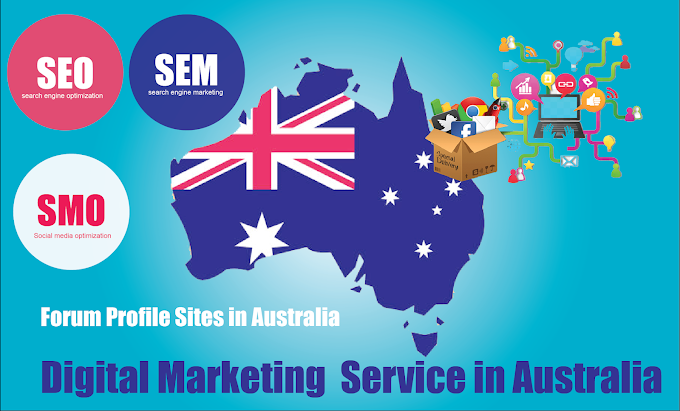How to Improve On-Page SEO?
On-page SEO refers to the
practice of optimizing web pages in order to improve the website's search
engine ranking and thereby drive organic traffic. But sometimes, SEO best
practices suggested by random practitioners can be misleading. No worry. We got
you covered. Our extensive guide will walk you through a few on-page SEO tricks
recommended and practised by the experts at any top SEO agency that you must
follow should you seek to improve your site's visibility on Google.
1. Generate High Quality Content
Content is the heart of an on-page SEO. Google always
prioritizes high-quality content. Informative and user-friendly content
automatically drives more audience and thereby obtains a higher rank.
Keyword Optimization
With a plethora of complex
algorithm, Google is consistently improving in understanding the searchers'
intent. No longer does it rely solely on popular keywords but deliver quality
content that can address the users' requirement. One of the primary objectives
of Google is to enhance user experience. Old-school SEO strategies like keyword
stuffing are penalized by Google's Penguin algorithm. This is why it's crucial
to learn the ideal keyword density before writing a content.
Add Relevant, Engaging, and High-Quality Visual Content
While uploading any visual
content, make sure to optimize them properly. For instance, compress the image
without affecting its quality and ensure that it doesn't take a long time to
get loaded. While JPGs are used for high-quality images, PNGs are ideal alternatives
for logos, icons, etc.
2. Site Architectural Elements
Site architectural elements indicate the constituents of
your website and individual pages. How you structure the website helps Google
to crawl the pages and the content.
Page URL
The page URLs should be easily comprehensible by the readers
and search engine. These are also important in maintaining the site hierarchy
as you create subpages, blog posts, and other types of internal pages.
Remove unnecessary or extra word
Use "https" if possible since Google uses it as a
positive ranking factor.
Internal Links
Internal linking refers to the
process of hyperlinking to other pages on your website. This is important for
on-page SEO as internal links send traffic to other webpages on your site and
intimate Google that your site is helpful and valuable. However, make sure that
the links correspond to the topic of the content because stuffing irrelevant
internal links will affect user experience.
Site Speed
Do you know that about 40% of consumers do not wait more
than three seconds for a page to load (source: Hoboweb)! This speaks volume of
the importance of optimizing page speed to enhance user experience and increase
retention rate. You may check the site's speed using Google's PageSpeed
Insights tool.
Mobile Responsiveness
With mobile devices generating about 51.51% of the global
traffic (source: Statista), it has become crucial for the business owners to
develop mobile-friendly sites.
3. HTML Elements
HTML elements indicate the elements in the source code of a
web page. (Quick tip: To check the source code, right click on the page >
view page source)
Title Tag
The title tag or the page title
is a short description of any web page that appears at the top of the browser
window. The title is the first cue for the search engine and the visitors what
they can find on the respective page. Here are a few best practices to optimize
the title tag:
-Keep it under 70 characters. Longer title can be cut off in
the search results.
Meta Descriptions
Meta description is a short and
compact page description that comes below the title in the search results. It
can influence the Click-Through Rate (CTR) in that a catchy and relevant meta
description has a better chance to drive traffic than a random and haphazard
one. Therefore, it's important to optimize the metadata.
Here's how you can make a proper meta description:
-Write a compact description revealing the USP of your
products or services.
-Make sure to keep the meta description within 160
characters.
-Avoid using characters like "-", "+",
or "&".
-Include the entire keyword or keyword phrase.
Image Alt-text
Image Alt-text is SEO for the
images. This will help Google to accurately index the image content. Even if
the image isn't loading during some technical glitch, Google can still read the
alternative text and help in ranking the page.
Bear the following points in mind while adding image-Alt
text:
-Make it specific and descriptive.
-Ensure that it is relevant to the context of the image.
-Keep it below 125 characters.
-Use keywords sparingly and do not stuff them. If these do
not naturally fit in, try to use semantic keywords or the most important terms
in a long-tail keyword.
We understand that a lot of tasks need to be accomplished
when it comes to optimizing your site. And this is why we recommend you to
outsource SEO services from any reputed SEO agency.
Conclusion
After finalizing your SEO plans,
implement these strategies on your website. Remember that SEO is not a
do-it-and-forget-it deal. Therefore, you need to constantly track and modify
the existing SEO strategies so as to keep your page relevant all the time.
Hope our guide has helped you to
understand how to achieve a competitive edge with advanced SEO tactics. Still,
if you have any query, feel free to reach us.
How to all on page SEO code generate given below.
1.Title
<head/></head>
<title> Happy New Years Eve party in
Atlanta Pajama Jammy Jam 2022</title>
2.Meta Description:
<head/></head>
<meta
name="description" content="It’s coming to
Happy New Year’s Eve party in Atlanta Pajama Jammy Jam 2022 The Iconic Pajama
Jammy Honoring STAB of the House Party
Bullies.">
3.Meta Keyword:
<head/></head>
<meta
name="keywords" content=" Paul Anthony,
Happy new year, Happy new year eve party 2022, Pajama Jammy Jam, Atlanta New
Years Eve Party 2022,Atlanta New Years Party 2022,Pajama Jammy Jam 2022, New
Years Eve party Pajama Jammy Jam 2022,Atlanta New Years Eve Pajama Jammy Jam
2022, New year Eve party Pajama Jammy Jam 2022,Paul Anthony 2021 New Years Eve
Party">
4.Google Analytics
<head/></head>
<!--
Global site tag (gtag.js) - Google Analytics -->
<script
async
src="https://www.googletagmanager.com/gtag/js?id=G-FYRR1W6796"></script>
<script>
window.dataLayer = window.dataLayer || [];
function gtag(){dataLayer.push(arguments);}
gtag('js', new Date());
gtag('config', 'G-FYRR1W6796');
</script>
5.Google Search Console
Put it Zone editor-Manage-txt
google-site-verification=tnbNEldpgzOtgQnxwefRT1DRdPANSQGPpjqaEiyB8gM
6.Twitter Card:
<head/></head>
Site link: https://developer.twitter.com/en/docs/twitter-for-websites/cards/overview/summary-card-with-large-image
<meta
name="twitter:card" content="summary" />
<meta
name="twitter:site" content="@EleteseGkn" />
<meta
name="twitter:title" content="Atlanta New Years Eve Party
2022" />
<meta
name="twitter:description" content="It’s coming to Happy New
Years Eve party in Atlanta Pajama Jammy Jam 2022 The Iconic Pajama Jammy
Honoring STAB of the House Party
Bullies." />
<meta
name="twitter:image" content="put here imagefilename.jpg"
/>
7. Schema.org:
<head/></head>
site link: https://www.rankranger.com/schema-markup-generator
<script type="application/ld+json">
{
"@context": "https://schema.org",
"@type":
"Event",
"name":
"New Years Eve party Pajama Jammy Jam 2022",
"description": "It’s coming to Happy New Year’s Eve party
in Atlanta Pajama Jammy Jam 2022 The Iconic Pajama Jammy Honoring STAB of the House Party Bullies.",
"startDate": "2021-12-31T21:00",
"endDate":
"2022-01-01T20:00",
"performer": {
"@type":
"PerformingGroup",
"name":
"House Party"
},
"location": {
"@type":
"Place",
"name":
"Atlanta",
"address": {
"@type": "PostalAddress",
"streetAddress": "",
"addressLocality": "Atlanta",
"postalCode": "3031",
"addressCountry": "+1"
}
}
}
</script>












0 Comments